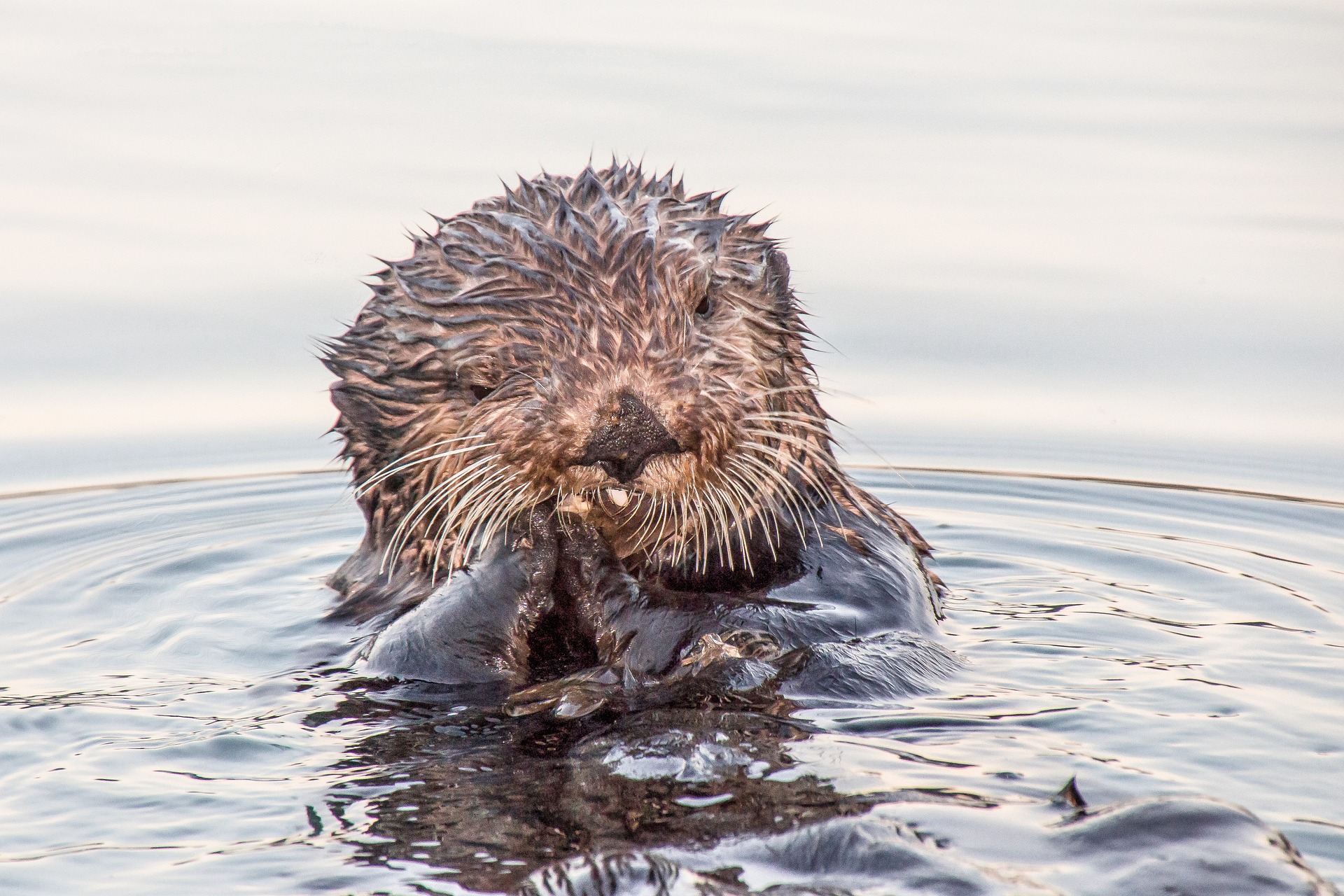 Evolution & Behaviour
Evolution & Behaviour
Sea otters make a splash
California sea otters have been pounding mussels on shoreline boulders for more than 10 years, and this behavior leaves long-term traces. Using methods from ecology and archaeology, we showed that it is possible to recognize the damaged rocks and broken mussel shells created by sea otters

Picture yourself at the seaside, at Monterey Bay in California. The sun is bright. There's a fresh breeze; the water is smooth and blue... Wait - what's that hammering noise down by the rocks? A sea otter in the water holds a mussel between its paws and is pounding it against a shoreline boulder. You recognize the sound: several fast taps, followed by a crunch as the otter bites open the fractured mussel shell to get at the meat. While floating on its back, the otter scoops out the mussel meat with its paws. With its powerful sharp canines, it greedily chews at the mussel until it's empty. The otter then casually rolls over to let the empty shell fragments drop into the water, then swims back to the boulders to pound open the next mussel.
How long have California sea otters been pounding mussels like this? What happens to all the mussel shells they break open? As researchers, we had questions. And these questions could only be answered by combining two disciplines that rarely work together: sea otter ecology and stone tool archaeology.
Our research team is a mix of experts on sea otter behaviour and archaeological analysis. For this project, we had to follow 3 steps:
First, painstakingly record over 10 years of data on sea otters eating all kinds of shellfish, which they search out and collect on the seafloor but consume at the surface while floating on their backs. The ecologists in our team spent countless hours observing otters through telescopes to document the types of shellfish they ate, and how they opened them (some are cracked open with teeth, others are pounded on rocks or even pried open with a handy crab claw).
Second, watch what exactly happens when the otters pound food on the shoreline boulders. We spent a month filming otters pounding on the boulders, in order to see how the otters approached the boulders, which rocks they pounded on, and how they manipulated the mussels.
Third, record the traces caused by the pounding otters. The archaeologists in our team measured in detail the pounding area, including the 421 boulders on-site and their degree of damage, as well as piles of broken mussel shells left by the otters.
We put all this information together, and presto - we found that sea otters create distinct archaeological records!
By linking up these 3 steps, we were able to connect the behavioural data with the archaeological data. Sea otters have been pounding mussels on the shoreline boulders for at least 20 years. This behaviour has created recognizable mussel shell piles and damage on rocks. The mounds of broken mussel shells are very impressive and are located underwater in the areas where otters pound and eat mussels. The shells have a specific type of breakage from being smashed against a rock: a diagonal break along the right half the shell. By watching our videos in slow motion, we discovered the reason: the otters have pawed-ness! They pound mussels with the right paw coming down on top of the mussel. The boulders have pounding marks mostly on the tops and the sides facing the water because the otters float in the water while pounding onto the boulders. We can also see how the otters' favourite boulders (which we filmed) are repeatedly used, being the most heavily worn down.
Why are we excited by this project? We proved that archaeology is not just about the human past. Sea otters, too, leave behind an archaeological record that tells us about their past. Specifically, about their favourite dinner spot. And now that we know what a sea otter dinner spot looks like, we could search for other ones that might have been used in the past, in places where sea otters are now extinct. By bringing together ecologists and archaeologists, we were able to discover something that none of us could have found on their own.
Next time you walk along the coast, listen out for that tap-tap-tapping of sea otters pounding their food...
Original Article:
M. Haslam et al., Wild sea otter mussel pounding leaves archaeological traces. Sci Rep 9, 4417 (2019)Edited by:
Massimo Caine , Founder and Director
We thought you might like
More from Evolution & Behaviour
Rudimentary form of syntax present in chimpanzees
Nov 29, 2023 in Evolution & Behaviour | 3 min read by Maël LerouxAn incredibly massive ancient whale skeleton reveals a new way to become a giant
Nov 27, 2023 in Evolution & Behaviour | 4 min read by Olivier LambertVikings and Migrants: Unravelling Scandinavia's Genetic Mosaic in the Viking Era
Nov 13, 2023 in Evolution & Behaviour | 3 min read by Anders Götherström , Ricardo Rodríguez VarelaFish identify themselves in mirrors and portraits
Oct 18, 2023 in Evolution & Behaviour | 3.5 min read by Masanori Kohda , Satoshi Awata , Shumpei SogawaEditor's picks
Trending now
Popular topics


